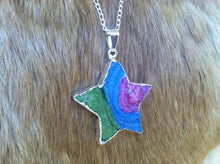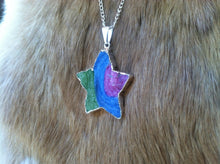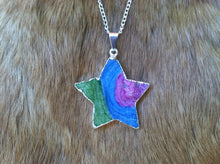
This rainbow geode druze necklace/pendant is coated in silver and is 1 1/4 inches by 1 1/4 inch. Geodes are a variable phenomenon and, therefore, many theories exist to explain how they are created. The term geode is derived from the Greek word Geodes which means "earthlike." A geode is a sphere-shaped rock which contains a hollow cavity lined with crystals. A geode that is completely filled with small compact crystal formations is called a nodule. The only difference between a geode and a nodule is that a geode has a hollow cavity, and a nodule is solid. Geodes begin as bubbles in volcanic rock or as animal burrows, tree roots or mud balls in sedimentary rock. Over time, the outer shell of the spherical shape hardens, and water containing silica precipitation forms on the inside walls of the hollow cavity within the geode. The silica precipitation can contain any variety of dissolved minerals. Over a period of thousands of years, layers of silica cool, forming crystals of different minerals within the cavity. Different types of silica cool at varying temperatures, thus creating layers of different types of mineral crystals. It does not come with a chain unless requested.








